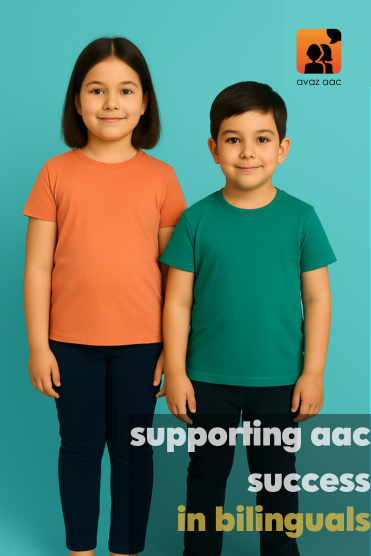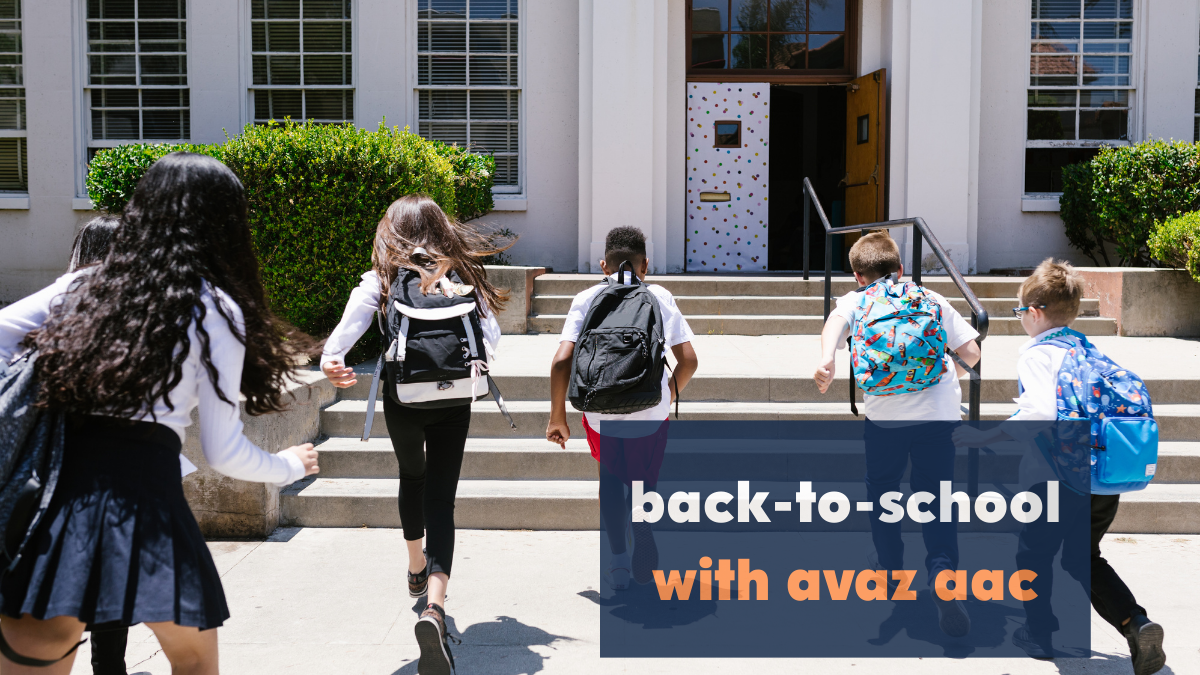When creating AAC support for bilingual or multilingual children, understanding how they learn their languages matters a lot.
Not all bilingual journeys look the same. Some kids grow up using two languages at the same time. Others learn one first and then pick up another later. These different paths affect vocabulary, grammar, and how kids use language across settings. And all of it influences how their AAC should work.


Two Bilingual Journeys, Two Communication Needs
Simultaneous bilinguals are exposed to two or more languages from birth.
Sequential bilinguals start with one language and are introduced to another later.
This difference affects how children think, speak and use AAC.
Vocabulary: Spread Across Languages
Simultaneous bilingual children often split their vocabulary across languages. They might say “apple” in English and “mango” in Hindi. Each language might look “behind” on paper but combined, they know just as many (or more) concepts as monolingual peers [Gross et al].
Sequential bilinguals may show stronger skills in their first language early on. As they’re learning the second, they may struggle with certain words or concepts especially at school.
For AAC Design:
- Include core and fringe vocabulary in all relevant languages.
- Don’t just translate. Include culturally specific terms, family words, local foods, or familiar routines in both languages [Boyle, 2014].
- Consider conceptual vocabulary, not just direct word matches.
Grammar: One Language or Two Rulebooks?
Simultaneous bilinguals may mix grammar early on. A sentence like “I want leche” reflects normal developmental code-mixing. Over time, they separate rules for each language.
Sequential bilinguals often transfer grammar from their first to second language like “car red” instead of “red car.” With practice, they adjust.
For AAC Design:
- Build sentence structures that match each language’s grammar.
- Use layouts that reflect syntax differences (e.g., gendered nouns in Spanish).
- Maintain consistent icon locations across languages for motor planning ease.
Code-Switching: A Superpower
Multilingual children naturally switch between languages. This is code-switching – a normal, even strategic way of communicating. It reflects flexibility, not confusion.
Simultaneous bilinguals usually switch more fluently. Sequential bilinguals may code-switch as they build confidence in their second language.
For AAC Design:
- Allow quick and intuitive language toggling without complex menus.
- Support mid-sentence switching (e.g., “Quiero milk”).
- Provide buttons or pages for both languages with consistent positioning.
Designing for the Whole
Children are more than the words they speak. Language is tied to identity, culture, and connection.
A child might use English at school, but speak Tamil or Spanish with their grandmother. Their AAC must reflect both.
What can we do?
- Ask families: What are the home words? What traditions or foods should the child talk about?
- Add bilingual modeling in therapy and school settings.
- Keep both (or all) languages active even if one is stronger right now.
Supporting Multilingual Minds: The Avaz Way
Whether your child or student is growing up bilingual or learning a second language, Avaz is built to flex with them. Our tools support:
- Culturally relevant vocabulary
- Easy code-switching
- Language-appropriate grammar support
- Multiple voice outputs across languages
📚 References
- Gross, M., Buac, M., & Kaushanskaya, M. (2014). Conceptual scoring of vocabulary measures in bilingual children.
- Boyle, S. (2014). Designing AAC Systems for Bilingual Users. Communication Disorders Quarterly.
- Soto, G., & Yu, B. (2014). Considerations for the provision of AAC services to bilingual children.
- Gutierrez-Clellen, V. et al. (2009). Code-switching in bilingual children with language impairment.
- Why bilingual AAC users need access to both languages. – Liliana Diaz



